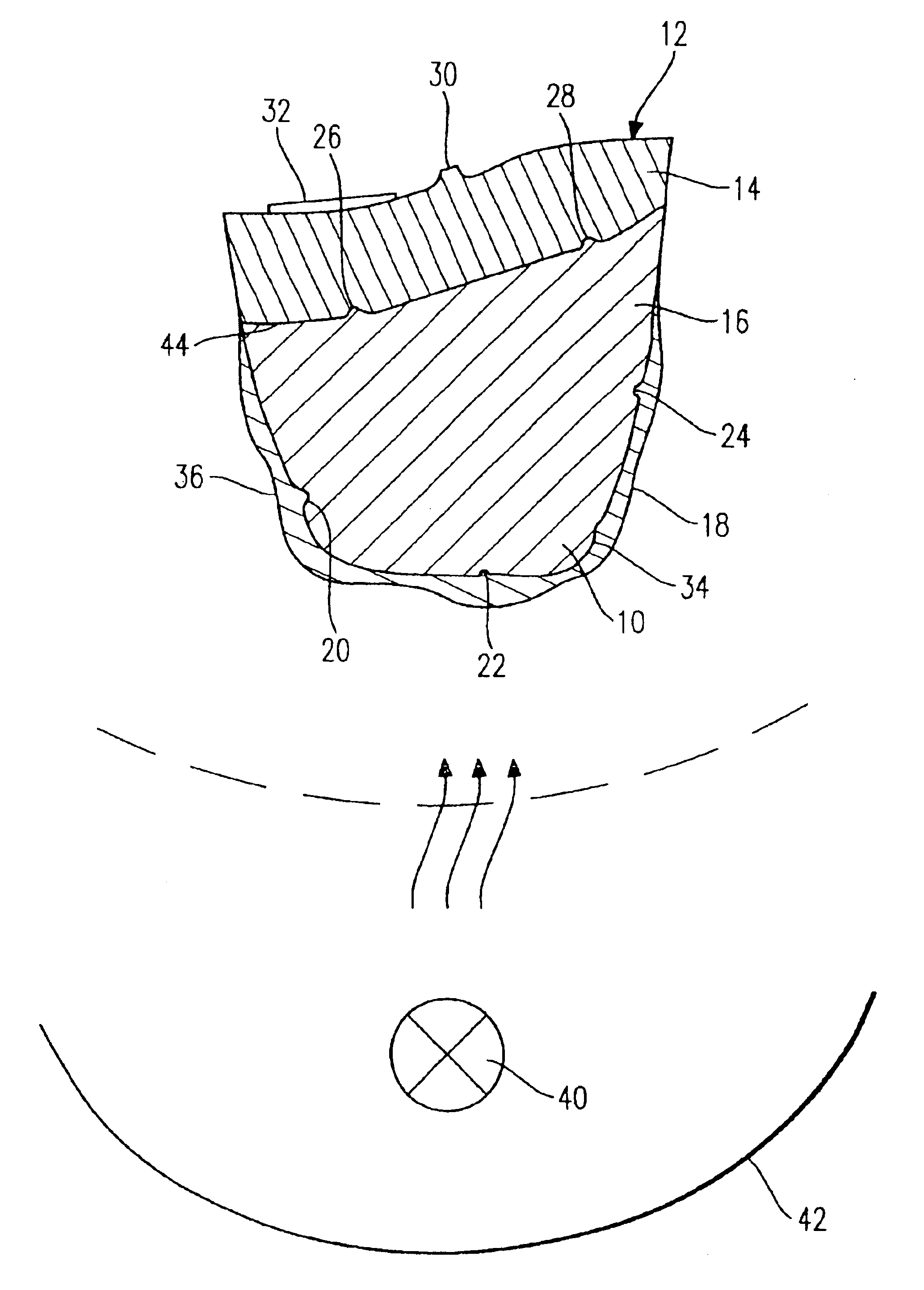Artificial tooth and a process for making an artificial tooth
a technology of artificial teeth and artificial teeth, applied in dental prosthetics, medical science, dentistry, etc., can solve the problem of particularly intense cutting mass, achieve the effect of reducing viscosity, promoting the polishing receptiveness of cutting mass surface, and improving interconnecting capacity of interlocking connections
- Summary
- Abstract
- Description
- Claims
- Application Information
AI Technical Summary
Benefits of technology
Problems solved by technology
Method used
Image
Examples
Embodiment Construction
[0030]As seen in the sole FIGURE of the drawing, an artificial tooth 10 is comprised entirely of a light polymerizable material. In the embodiment illustrated, the artificial tooth is configured of three surfaces, whereby a base surface 12 extends from a base mass 14 and forms the base of the tooth. A tooth bone mass 16 is formed on the base mass 14 and the tooth bone mass 16 is covered by a cutting mass 18.
[0031]The masses exhibit, as viewed in a direction from top to bottom—that is, from the base mass toward the cutting mass—increasing transparency.
[0032]The masses are produced in a layered and sequential manner commencing with the cutting mass 18, thereafter, the tooth bone mass 16, and, finally, the base mass 14. In accordance with the production thereof by injection molding, the masses each include injection projections, whereby the cutting mass illustrated in the sole FIGURE of the drawing includes three injection projections 20, 22, and 24; the tooth bone mass includes two in...
PUM
| Property | Measurement | Unit |
|---|---|---|
| size | aaaaa | aaaaa |
| size | aaaaa | aaaaa |
| size | aaaaa | aaaaa |
Abstract
Description
Claims
Application Information
 Login to View More
Login to View More - R&D
- Intellectual Property
- Life Sciences
- Materials
- Tech Scout
- Unparalleled Data Quality
- Higher Quality Content
- 60% Fewer Hallucinations
Browse by: Latest US Patents, China's latest patents, Technical Efficacy Thesaurus, Application Domain, Technology Topic, Popular Technical Reports.
© 2025 PatSnap. All rights reserved.Legal|Privacy policy|Modern Slavery Act Transparency Statement|Sitemap|About US| Contact US: help@patsnap.com


